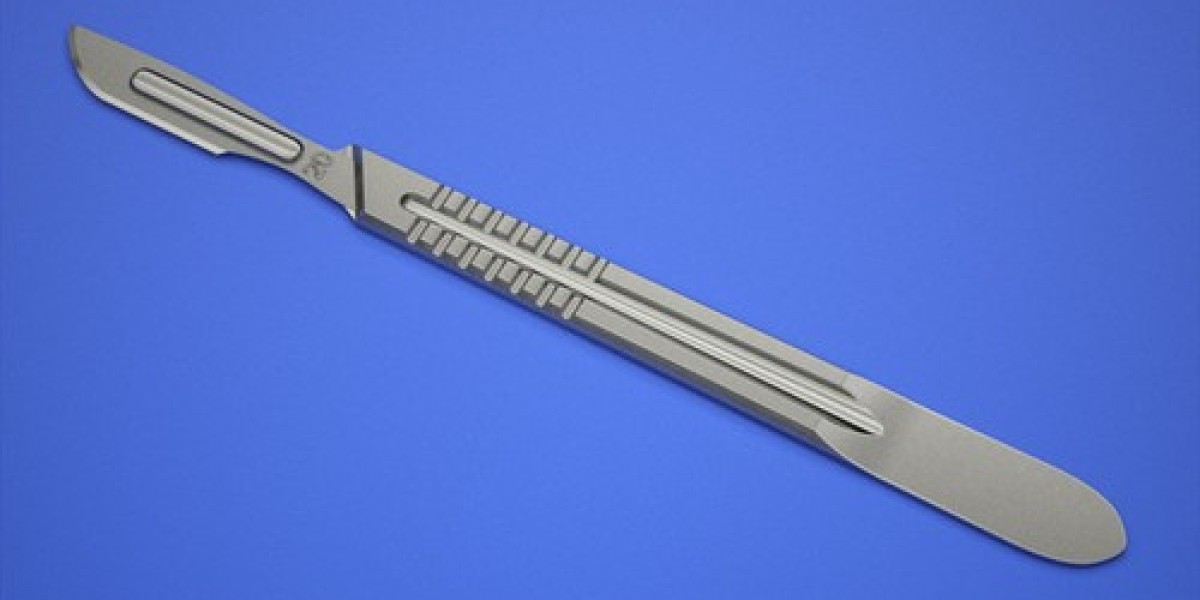Surgical blades are among the most essential tools in the medical field, used to make precise incisions during a variety of procedures. While these small instruments may seem simple, they are the result of highly advanced manufacturing processes that ensure their sharpness, strength, and sterility. Producing Surgical Blades involves a combination of materials science, engineering, and precision craftsmanship, all designed to meet the rigorous standards required for use in surgery.
In this article, we will take a behind-the-scenes look at how surgical blades are manufactured, from the selection of materials to the final sterilization process. Understanding the manufacturing process not only highlights the incredible precision required to make these blades but also underscores their critical role in medical practice.
1. The Importance of Precision in Surgical Blade Manufacturing
Surgical blades must meet exacting standards to ensure they can perform their function effectively and safely. A blade must be sharp enough to make clean incisions, strong enough to withstand pressure without breaking, and sterile to prevent infections. The importance of precision in crafting surgical blades cannot be overstated, as any deviation from the required specifications could compromise patient safety.
a) Why Precision Matters
Precision ensures that surgical blades can create clean cuts, minimizing tissue damage and promoting faster healing. A dull blade could tear tissue rather than cutting it, leading to longer recovery times and potential complications. Additionally, the strength of the blade must be carefully calibrated so that it remains intact during surgical procedures, especially in more invasive or demanding surgeries.
b) Standards and Regulations
Surgical blades are subject to strict industry standards and regulations, typically enforced by bodies like the International Organization for Standardization (ISO) and the Food and Drug Administration (FDA). These standards govern everything from the materials used to the production methods and sterilization processes, ensuring that every blade is safe for use in the operating room.
2. Step 1: Material Selection
The first step in the manufacturing of surgical blades is selecting the right materials. Surgical blades are typically made from stainless steel or carbon steel, although some specialized blades may be made from ceramic or titanium.
a) Stainless Steel
Stainless steel is the most common material used for surgical blades due to its corrosion resistance, durability, and ability to be sharpened to a fine edge. Stainless steel blades can withstand repeated sterilization processes and remain sharp over time, making them ideal for reusable surgical blades.
b) Carbon Steel
Carbon steel is another popular material for surgical blades because of its exceptional sharpness. Carbon steel blades can be honed to an extremely fine edge, making them ideal for procedures requiring high precision. However, carbon steel is more prone to corrosion, so it is often used in disposable blades or in conjunction with protective coatings.
c) Ceramic and Titanium
For more specialized applications, surgical blades may be made from ceramic or titanium. Ceramic blades offer an exceptionally sharp edge and are non-metallic, making them useful in environments where metal contamination is a concern. Titanium blades, on the other hand, are lightweight and extremely durable, offering high strength for demanding surgical procedures.
3. Step 2: Blade Forging and Shaping
Once the material has been selected, the next step is forging and shaping the blade. This process involves transforming raw materials into the basic shape of the blade through heat and pressure.
a) Forging the Blade
In this step, the raw metal is heated to a high temperature and shaped into the basic form of the blade using precision molds or stamping processes. The forging process is crucial because it ensures the blade will have the correct strength and resilience. For stainless steel blades, the metal is heated to the point where it becomes malleable and can be pressed into the desired shape.
b) Shaping the Blade
After the blade has been forged, it undergoes additional shaping to refine its cutting edge and overall profile. This is done through precision grinding and milling processes, where machines cut away excess material to form the final shape of the blade. These processes must be extremely accurate to ensure the blade’s dimensions meet the required specifications.
4. Step 3: Hardening and Tempering
Hardening and tempering are critical steps in the manufacturing process that ensure the blade has the necessary strength and durability to perform in surgery. This process involves heating the blade to a high temperature and then cooling it rapidly to harden the material.
a) Hardening
During the hardening process, the blade is heated to a specific temperature, depending on the type of metal being used. The blade is then rapidly cooled, or “quenched,” in oil or water to lock the metal into a hardened state. This process significantly increases the strength of the blade and ensures it can withstand the forces applied during surgery.
b) Tempering
After hardening, the blade is tempered to reduce brittleness. This involves reheating the blade to a lower temperature and then cooling it gradually. Tempering balances the hardness of the blade with its flexibility, ensuring it is strong but not too brittle, which could lead to breakage during use.
5. Step 4: Sharpening
One of the most important steps in the manufacturing process is sharpening the blade. Surgical blades must be razor-sharp to create clean, precise incisions. The sharpening process involves grinding the edge of the blade to a fine point, often using specialized machines that can grind the metal to within micrometers of precision.
a) Multiple Grinding Stages
Sharpening typically involves multiple stages of grinding, starting with a rough grind to shape the edge and followed by finer grinds to hone the blade to its final sharpness. The blade is polished and inspected at each stage to ensure the cutting edge meets the required sharpness and precision.
b) Testing Sharpness
After the sharpening process, the blade is tested for sharpness and precision. This may involve cutting through synthetic materials that mimic human tissue to ensure the blade performs as expected. Any imperfections in the sharpness are corrected before the blade moves on to the final stages of production.
6. Step 5: Coating and Sterilization
Once the blade has been sharpened, it may be coated with a protective material to enhance its performance. For example, some carbon steel blades are coated with a rust-resistant material to prevent corrosion. After this, the blade is sterilized and packaged for use.
a) Sterilization Methods
Sterilization is a critical step that ensures the blade is safe for use in surgery. Common methods of sterilization include autoclaving (steam sterilization), gamma radiation, and ethylene oxide gas. These processes eliminate any bacteria or pathogens on the blade, ensuring it is completely sterile when it reaches the operating room.
b) Packaging
After sterilization, blades are packaged in sterile, sealed containers to ensure they remain uncontaminated until use. For disposable blades, this packaging is often single-use, designed to be opened immediately before the procedure.
7. Step 6: Quality Control and Inspection
The final step in the manufacturing process is a thorough inspection to ensure the blade meets all required standards. Every blade must pass a rigorous quality control process, including visual inspections and sharpness tests, before it can be approved for surgical use.
Conclusion
Manufacturing surgical blades is a highly intricate process that involves multiple stages of precision crafting, from selecting the right materials to forging, shaping, hardening, sharpening, and sterilizing. Each step is critical to ensuring that the blade performs flawlessly in the operating room, where precision and safety are paramount. The evolution of surgical blade manufacturing has enabled surgeons to perform complex procedures with greater accuracy, minimizing tissue damage and improving patient outcomes. Through careful attention to detail, modern surgical blades continue to be one of the most important tools in medical practice, saving lives and enhancing the quality of surgical care.







